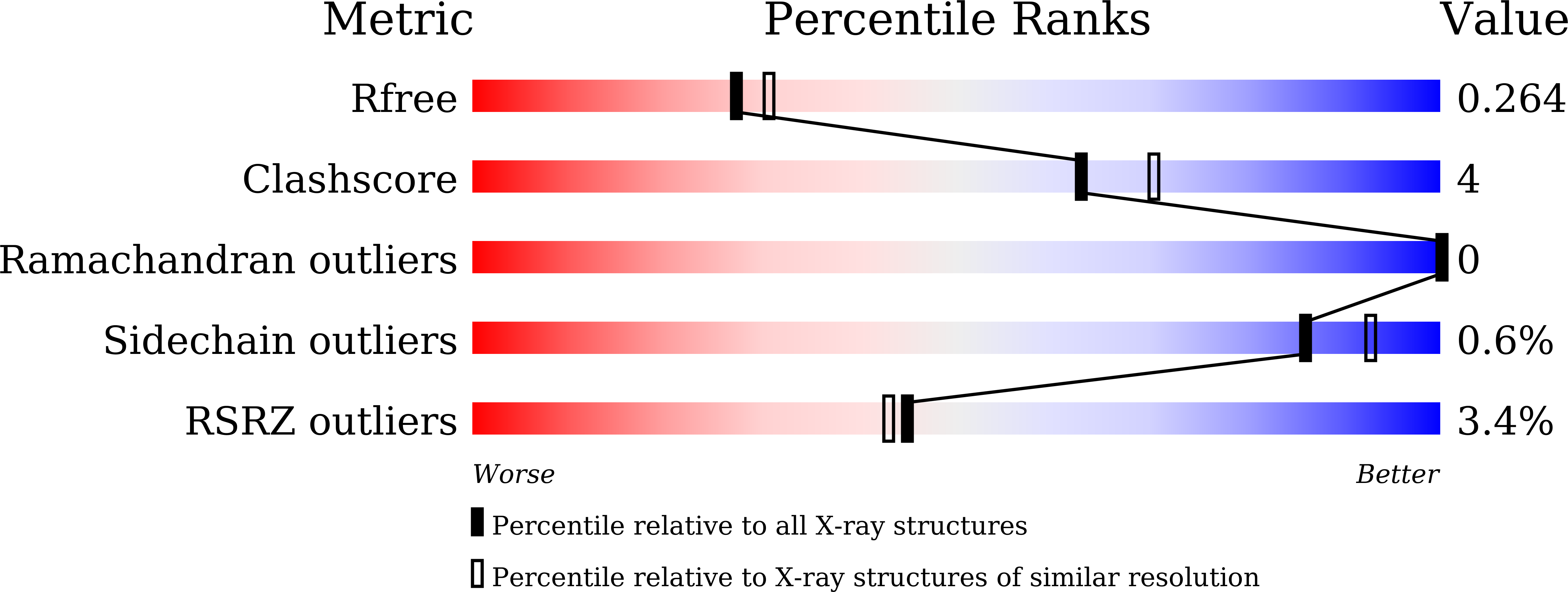The structure of human EXD2 reveals a chimeric 3' to 5' exonuclease domain that discriminates substrates via metal coordination.
Park, J., Lee, S.Y., Jeong, H., Kang, M.G., Van Haute, L., Minczuk, M., Seo, J.K., Jun, Y., Myung, K., Rhee, H.W., Lee, C.(2019) Nucleic Acids Res 47: 7078-7093
- PubMed: 31127291
- DOI: https://doi.org/10.1093/nar/gkz454
- Primary Citation of Related Structures:
6K17, 6K18, 6K19, 6K1A, 6K1B, 6K1C, 6K1D, 6K1E - PubMed Abstract:
EXD2 (3'-5' exonuclease domain-containing protein 2) is an essential protein with a conserved DEDDy superfamily 3'-5' exonuclease domain. Recent research suggests that EXD2 has two potential functions: as a component of the DNA double-strand break repair machinery and as a ribonuclease for the regulation of mitochondrial translation. Herein, electron microscope imaging analysis and proximity labeling revealed that EXD2 is anchored to the mitochondrial outer membrane through a conserved N-terminal transmembrane domain, while the C-terminal region is cytosolic. Crystal structures of the exonuclease domain in complex with Mn2+/Mg2+ revealed a domain-swapped dimer in which the central α5-α7 helices are mutually crossed over, resulting in chimeric active sites. Additionally, the C-terminal segments absent in other DnaQ family exonucleases enclose the central chimeric active sites. Combined structural and biochemical analyses demonstrated that the unusual dimeric organization stabilizes the active site, facilitates discrimination between DNA and RNA substrates based on divalent cation coordination and generates a positively charged groove that binds substrates.
Organizational Affiliation:
Department of Biological Sciences, School of Life Sciences, Ulsan National Institute of Science and Technology, 50 UNIST-gil, Ulsan 44919, Republic of Korea.

















